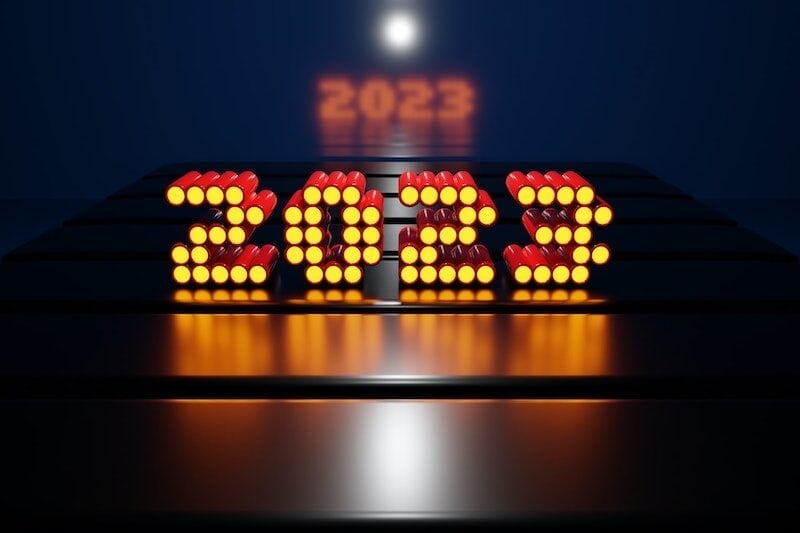Open Banking, Open Payments and Open Finance made great strides in the UK and across Europe in 2022.
This, despite the fact that the economic and geopolitical backdrop was increasingly challenging.
Skyrocketing energy prices, elevated inflation and subsequent sharp interest rate rises by the Bank of England and European Central Bank, respectively, combined to create what has been dubbed a cost-of-living crisis.
For this reason, says Tink’s CEO and co-founder Daniel Kjellén, the need for better risk decisioning and consumer access to financial services “has never been greater”.
He predicts that 2023 will be the year when large financial institutions “ditch outdated credit checks and really start to use Open Banking for credit scoring to create fairer, more accurate affordability decisions – moving it mass-market”.

Tink CEO Daniel Kjellen
“With the economic crisis showing no sign of slowing, the robust lending decisions that Open Banking facilitates are desperately needed.
“This will be vital to ensuring financial institutions make better risk decisions to reduce the number of loans that default, protecting potentially at-risk or vulnerable consumers from problem debt,” Kjellén adds.
From boom to bust?
In 2022, it wasn’t only households and consumers that faced a squeeze – the fintech sector fell back to earth following a year of record valuations and huge volumes of M&A in 2021.
In the final few months of 2022, a number of high-profile fintechs announced redundancies and significantly reduced their valuations.
According to data from Innovate Finance, the total invested in fintech globally in 2022 reached $92 billion, down 30% on the previous year, and was spread across fewer deals, at 5,263.
The UK secured $12.5 billion of fintech investment, placing it second behind the US. Germany’s fintechs attracted $2.9 billion – but both Germany and the UK saw lower levels of investment.
Anita Szarek, chief financial officer at Pleo, says: “Prior to the recession, the fintech market was one of the boom sectors in the European startup and tech ecosystem.
“But 2023 is shaping up to look slightly different. When it comes to technology, there will be greater consolidation of software – driving towards all-in-one solutions that can replace multiple tools and unify disparate data to provide a single consolidated view of business spend.”
She is keen to point out that automation and AI will have a greater role to play, whether that’s in minimising fraudulent expense reports by monitoring, tracking and approving expenses, or helping to maximise business efficiency “via more accurate business forecasting”.
As the saying goes, there are reasons to be cheerful.
“We are undoubtedly facing a difficult economic climate, but this kind of environment often produces innovation, bold ideas and solutions to new problems,” adds Szarek.
However, she suggests fintechs may have to adapt their business model this year from “growing at all costs” to growing efficiently “in order to stay profitable”.
Out of the starting blocks
Embedded finance is hardly new, but its potential is still to be fully realised – and recent research suggests this could be the year that happens.
The findings of a report by Vodeno and Aion Bank, titled ‘Banking-as-a-Service 2.0: Why Embedded Finance will make its mark in 2023’, revealed that 65% expect to see more consumers using banking services via non-financial brands enabled by BaaS, in place of traditional banking.
The survey of 1,000 decision makers at businesses in the UK, Netherlands and Belgium, found that 59% expect the lines between ecommerce platforms and traditional banking services to “blur” this year.
In response to the findings, Vodeno CEO Wojciech Sobieraj said that platform banking – where financial products are embedded in the customer journeys of brands people use every day – “is the future”.
Silvia Mensdorff-Pouilly, SVP banking and payments Europe at FIS, explains: “Advanced technology means that a range of financial services can be embedded into the places consumers choose to spend their time and money.
“Embedded finance is the invisible back-end technology that makes these modern payment experiences possible, and we expect embedded finance to explode in 2023.”
She says it will be the digital-native younger generations driving this trend, though.
Research by FIS conducted among 1,000 UK consumers shows that 78% of Gen Z and 70% of Millennials plan to shop via social media in the next 12 months, while 67% of Gen Z consumers intend to explore checkout-free supermarkets.
However, Mensdorff-Pouilly warns of the pitfalls to avoid when it comes to embedded finance.
“To achieve a true embedded finance utopia, firms need to leverage the wealth of data they have – bearing in mind data privacy regulations – and apply artificial intelligence to ensure customers are presented with the most appropriate products and services for them, precisely at their point of need,” she says.
“But if embedded finance spirals into presenting more and more untailored offers to the consumer, then it will simply turn them off.”
Payments predictions
There was some significant progress when it came to Open Banking-powered payments last year.
In the UK, the nine largest current account providers faced a July 2022, as set by the Competition and Markets Authority (CMA), to implement variable recurring payments (VRPs) for sweeping services.
In Europe, the biggest development came later in the year. In October, the European Commission adopted a proposal mandating eurozone banks to offer euro instant payments.
The roll-out of instant payments in euros means they will become available to all citizens and businesses holding a bank account in the European Union and in European Economic Area countries.
Paul Thomalla, head of regulatory and industry affairs at Finastra, says: “It’s a pivotal time for the payments industry as we enter the next phase of immediate payments around the world, with preparations for FedNow well underway, proposed legislation mandating EU instant payments and the UK now on its fourth iteration of Faster Payments.”
Looking ahead, Thomalla notes that the UK’s New Payments Architecture (NPA) is on its way and will start impacting direct participants in the next 12 months.
“The NPA aims to maintain a robust and resilient payments platform that can cope with the rising volume of interbank payments in the UK. It hopes to drive the adoption of the ISO 20022 financial messaging standard, while delivering new payment products that operate in a real-time paradigm,” he adds.
“The arrival of the NPA represents a major transformation of the UK’s payments landscape, bringing both opportunities and challenges for banks and financial institutions. Action will be needed to ensure that banks can process payments under both FPS (Faster Payment Scheme) and NPA.”
Tink’s Kjellén predicts 2023 will be a year of “accelerated change” in the payments market and that, by the end of the year, the majority of adults in Europe will have come across an Open Banking-powered payment.
“As a backdrop to this, consumer expectations for ‘one-click’ payments will only become more fierce and, as a result, we will see more consolidation in the market when it comes to the number of options available at the point of payment,” he forecasts.
“Businesses have recognised that payments can become a competitive advantage for them, and that consumers will gravitate to a brand they already know and trust. This means the opportunity for big brands to white-label their own preferred ‘Pay by Bank’ payment method, either through partnerships or acquisitions, will be a clear trend for 2023.”










